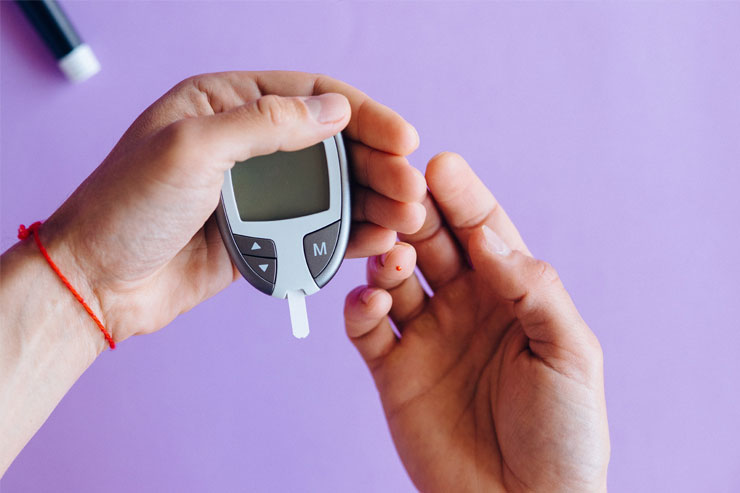You are individual and you are our priority
Glinides commonly referred to as prandial glucose regulators, are a class of oral medications developed to treat persons with type 2 diabetes mellitus. By releasing more insulin into the bloodstream, glinides are used to treat type 2 diabetes by lowering blood sugar levels. Resulting in better postprandial glucose level control.
Glinides work similarly to sulfonylureas, they also encourage the beta cell to produce more insulin. Unlike sulphonylureas, prandial glucose regulators have a rapid onset but only last for a short time.
To prevent additional post-meal rises in blood glucose levels, they are taken up to three times a day, up to 30 minutes before meals.
Two products are categorized as prandial glucose regulators:
Glinides are insulin secretagogues that increase the pancreas' production of the hormone insulin, which controls blood sugar levels.
Glinides work by connecting to a protein channel (ATP-sensitive potassium channel) in the pancreatic cells that make insulin (beta cells). In the end, insulin-producing beta cells produce more insulin.
Glinides are suitable for people with type 2 diabetes whose blood sugar levels are above the NICE guideline target of 6.5%.
Prandial glucose regulators, which lower blood glucose levels greatly and work quickly, are advantageous for persons with a non-routine lifestyle.

Side effects of glinides include
Trade Name- Prandin
Mechanism of action of Repaglinide-
Repaglinide is useful for one suffering from type 2 diabetes. Patients, who have allergies to sulfonylureas, can use Repaglinide.
Side effects of Repaglinide include:

Store in a closed container away from light, heat, and moisture at room temperature.
If you are skipping a meal or your blood sugar is low, you shouldn't take a prescription dose.
Keep track of your blood sugar level and use the medicine as directed by your doctor. Keeping blood sugar levels under control helps prevent kidney damage, blindness, nerve damage, limb loss, and sexual function problems.Repaglinide works by helping the body to create more insulin.
Always follow your doctor's instructions when taking medication. At Specialty Care Clinic, we have a team of highly qualified doctors who assists with various diseases.
Trade name- Starlix
Mechanism of action-
In Type II diabetics, nateglinide is useful for controlling postprandial hyperglycemia. In combination with dietary measures and exercise, this medicine is used to help control blood sugar levels in type II diabetics.
A person who has type 1 diabetes.
Side effects of Nateglinide include:

There may be negative effects of Nateglinide, tell your doctor if any of these symptoms are severe or do not go away:
Storage - Keep this medicine in a closed container, away from heat and moisture at room temperature and out of children’s reach.
Regular blood sugar and glycosylated hemoglobin (HbA1c) tests should be done to monitor your nateglinide response.
Starlix (common version) is covered by 74% of insurance plans at a copay of $60-$80, but some pharmacies may offer coupons or cash discounts.
It is very important to control the blood sugar level of a diabetic patient along with diet and exercise. Specialty Care Clinics assist with the best possible treatment after diagnosing the conditions. Use medication after consulting a doctor. Contact us at 469-545-9983 if you have diabetes or want to book an appointment.